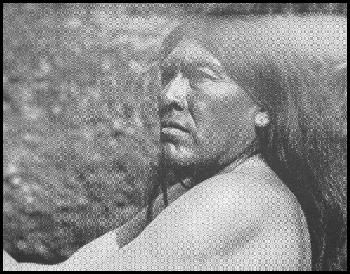The Ash Creek Reservation was Established in 1851 when the Chiefs of the Wintu Tribes signed the Treaty of Cottonwood Creek with Indian Agent O.M. Wozencraft.
The Treaty of Cottonwood Creek ceded over 2.3 million acres (2.304 or 60 mi sq.) of Wintu lands in Northern California. Lands rich in gold and other minerals, vast timber reserves, plentiful water sources, and large tracts of fertile agricultural land. In 1851 Northern California the Wintu far out-numbered the European-American immigrants. Still the thousands of miners swarming the landscape proved to the Wintu to be disruptive to native food resources and native sustenance patters, and this section of the State at the time was refereed to as Indian Territory on Maps. Non-Indians vehemently wanted the land for their own and stopped at nothing to remove the Wintu from the landscape. Numerous massacres of Wintu, Yana, and Pit River peoples amongst others were a regular occourance for decades, thievery of women and children for sale into legalized indentureship was commonplace, and the decades long starvation perpetuated upon the Wintu people by miners literally stripping the hillsides bare in search for gold, left no deer or acorns on the hill sides, nor any salmon or trout in the rivers or streams, many Wintu succoumbed to starvation in the first twenty years of contact with Euro-Americans. Finally when the Federal Treaty signers came in 1851 to the Rancho San Buenaventura summoning all the Leaders of the Wintu, the tribe was in a most destitute situation.The Treaty of Cottonwood Creek established the 1.4 million acre (1.459 or 38 sq mi.)Ash Creek Reservation that served as little more that a stopping ground for the Wintu and other tribes being taken there. It had been almost twenty (20) years since the malaria epidemics of 1831 swept thru the valley taking one in three lives, brought here by Hudson Bay Trappers from British Columbia, and two decades of Spanish Land Granting of which P.B. Reading's San Buenaventura was the Northernmost. Little did the Wintu leaders know when signing that later that year back in Washington D.C. Federal Legislators had no intention of honoring this or the other Seventeen Lost Treaties of California. The Treaties signed that year with the Tribes of California ceded the entire state and in one move the government deprived the Indians of land legally and almost over night where being forced onto hastily set up military reservations. Places like Hoopa Valley Reservation (1856), Tule River Reservation (1854), Round Valley Reservation (1854), Ft. Bidwell Reservation (1858), all survived the non-ratification by becoming Military Refugee Camps where thousands of Indians from many tribes were brought as Indians were killed or herded from the landscape. Others like Upper Klamath Reservation , Mendocino Reservation, Ash Creek Reservation, Tejon Reservation were abandoned during the 1850's and opened for non-Indian settlement.
The Treaties were hidden by Congress in 1852 and were not re-located until 1905.


 (L to R) Sam Batwi ("Yuki Sam" Central Yana), A.L. Kroeber, Ishi (Yahi) in 1911
(L to R) Sam Batwi ("Yuki Sam" Central Yana), A.L. Kroeber, Ishi (Yahi) in 1911
